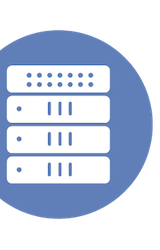Tech Field Day Coverage
Our delegate panel includes independent writers and thought leaders, and we collect their coverage of the event, Tech Field Day presentations, and sponsoring companies here.
ASIC Programmability from Barefoot Networks
Barefoot Networks presented their fully programmable Tofino switch at Networking Field Day last month. It left an impression on a lot of our delegates, including Aaron Conaway. He came away impressed that Tofino is the opposite of a fixed-function ASIC. By being fully programmable, the switch is essentially a blank slate, that can be completely reprogrammed in a software update taking 50ms. The other implication is that the switch can insert tracking information natively to your traffic, all while maintaining high performance. It’s a total rethink on how a switch can behave. This may put the burden of providing features to the switch OS makers, but it still turns a switch from something fixed in stone to a dynamic part of your network.
Read More:
ASIC Programmability from Barefoot Networks
Deploy StorMagic datastore with vCenter
Andrea Mauro gives a walkthrough on how to setup a shared datastore from previously deployed VSAs. He does this via the StorMagic integration plugin. There are more than a few steps, but Andrea makes the walkthrough easy to follow. This may take a few minutes to setup, but once done, you’ll have shared storage usable as a normal vSphere block datastore.
Read More:
Deploy StorMagic datastore with vCenter
How Tech Field Day influenced me in 2016
Max Mortillaro reflects back on what he’s learned from Tech Field Day events in 2016. It was a really eventful year for him, and he found a lot of value both personally and professionally with the events. Overall, he loves the emersion the event allows. They provide in-depth technical discussions with likeminded colleagues. It’s a community of enterprise IT goodness, and it was a pleasure to have Max at the events.
Read More:
How Tech Field Day influenced me in 2016
Deploy StorMagic VSA with vCenter
StorMagic presented at Tech Field Day last week. Andrea Mauro was one of the invited delegates, and before the event, he wrote a series of posts about their solution. In this one, we walks through deploying a StorMagic VSA directly from vCenter. To see what they announced at Tech Field Day, be sure to check out our full video coverage.
Read More:
Deploy StorMagic VSA with vCenter
Tech Field Day 13 Preview: Dell EMC
Tech Field Day is coming up in Austin this week, and Thom Greene wrote about what he’s looking forward to from Dell EMC. He’s excited to learn more about their VxRail hyperconverged solution. Hyperconverged Infrastructure is a crowded space, but Dell EMC thinks VxRail differentiates by being built from the ground up with VMware’s SDDC packages in mind. Of course with the size of a company like Dell EMC, you’ll have to tune into the live stream to see what exactly they’ll be presenting. We can’t wait!
Read More:
Tech Field Day 13 Preview: Dell EMC
Silver Peak’s End-to-End SD-WAN
There’s a lot of agreement in the enterprise about what is wanted out of an SD-WAN solution, but a lot of different ways of getting there. Rich Stroffolino looks at a solution from Silver Peak. Instead of using deep packet inspection, the company uses it’s end-to-end network control to derive their analytics. This allows for an understanding of network traffic from the very first packet, which allows the SD-WAN to be more secure and efficient. It’s a really interesting spin on this booming technology.
Read More:
Silver Peak's End-to-End SD-WAN
Who Is Going to Tech Field Day 13? These People, plus Me.
Alastair Cooke will be at Tech Field Day next week. In the excitement over which companies will be presenting, Alastair takes some time to also introduce the amazing delegates as well. He runs down each delegate and gives links to some of their excellent work, along with notes of where and when they’ve crossed paths in the past. It’s a great way to get to know some of the faces on the Tech Field Day livestream.
Read More:
Who Is Going to Tech Field Day 13? These People, plus Me.
Simplify SD-WAN with Riverbed
At Networking Field Day last week, Rich Stroffolino came away impressed with Riverbed. Their SD-WAN solution is based around making things as simple as possible. They showed in real time how to get an SD-WAN site online with just a few simple clicks and an IP address. All of this is while still providing comprehensive policy based tools to make it easy to give specific apps, users and locations the correct priority. Their guiding principle is that a network exists to move a packet from one place to another, how it’s managed should be as simple as possible. As Riverbed said in their presentation, “you can either make the sausage or enjoy the sausage.”
Read More:
Tech Field Day Extra at Cisco Live Europe 2017
Tech Field Day is excited to be working in collaboration for an event at Cisco Live Europe, coming up in February in Berlin. Dominik Pickhardt will be joining the other distinguished delegates, and he’s looking forward to all the great presentations and discussions. We can’t wait to see everyone there!
Read More:
Tech Field Day Extra at Cisco Live Europe 2017
Sorting Through SD-WAN
The SD-WAN landscape can be a little tough to navigate. While the basic idea is easy enough to understand, every company out there seems to have their own implementation and market focus. Tom Hollingsworth thinks the moment of SD-WAN maturity is finally upon us. If anything, Tom thinks there might not be any more room for differentiation for new companies. Overall though, the space is really exciting, as it can only get easier to deploy and extend. 2017 may indeed be the year of SD-WAN!
Read More:
Tech Field Day 13 Preview: SolarWinds
Thom Greene takes a look at SolarWinds before they present at Tech Field Day next week. They’re one of those companies that have such a comprehensive software catalogue, you can have used their products for years and still be surprised by what they offer. Thom is looking forward to seeing what this diverse company will present in Austin!
Read More:
Tech Field Day 13 Preview: SolarWinds
DDoS Detection with Big Switch Networks
DDoS attacks made major headlines in 2016. Even when not heard about publicly, they can be costly for businesses as the disrupt operations and mission critical services. At Networking Field Day last week, Big Switch Networks outlined their DDoS detection platform, called the BigSecure Architecture. Rich Stroffolino looks at this architecture as taking the ordinarily linear chain of security from the public internet to the data center, and adds a variety of countermeasures to loop in and detect malformed traffic caused by a DDoS attack. The ultimate goal is to always allow legitimate traffic in, and to coordinate with mitigation solutions once an attack is detected.
Read More:
DDoS Detection with Big Switch Networks
Getting Full Resolution with Kentik Detect
At Networking Field Day last week, Kentik introduced their network monitoring solution, Kentik Detect. Rich Stroffolino came away impressed with it. The company is dedicated to make sure you always are able to get a full resolution view of what is going on with the network, instead of replying on inaccurate samples or composites. This dedication led them to develop a completely new engine, backed by a new database design, to make sure all streaming information is logged at incredibly efficient speeds.
Read More:
Getting Full Resolution with Kentik Detect
The Quest for the Self-Driving Network with Juniper Networks
Rich Stroffolino takes a look at what Juniper Networks presented at Networking Field Day last week. What really interested him was the company’s philosophical approach they laid out during the event. Instead of trying to simply implement a ton of features for network automation, Juniper takes a much more systematic approach. They laid out their ultimate goal, to create a fully self-driving network. In the presentation, they outline what it will take to get there, and how their current solution fits into that roadmap.
Read More:
The Quest for the Self-Driving Network with Juniper Networks
Exploring Mesh with an AP-205H
Scott McDermott takes a look at the HPE AP-205H access point that he got a look at from Wireless Field Day. While the device is versatile enough for a number of use cases, what Scott wanted to see is if he could use it to bridge all of his home media devices. He walks through all the steps of getting this setup, and what his impressions are. It might be a little overkill, but it definitely shows it’s a versatile piece of hardware!
Read More:
Exploring Mesh with an AP-205H
Cumulus Networks Walks A Fine Line With New Switch Hardware
Drew Conry-Murray looks at the implications of Cumulus Networks announcement of Cumulus Express. This is a program whereby Cumulus will sell switch hardware with their Cumulus Linux distribution pre-installed. Drew found it a little surprising that a company that made its name pitching disaggregation would take the approach. He reviews what they’re offering in the product line, and how recent announcements from hardware vendors could use their switch operating system.
Read More:
Cumulus Networks Walks A Fine Line With New Switch Hardware
Barefoot Networks and the Burden of Design
Rich Stroffolino looks at what Barefoot Networks presented at Networking Field Day. It’s a pretty ambitious product, a completely programmable networking switch called Tofino. It uses the P4 programming language to allow for everything from the parser to all tables to be customized or excluded all together. Tofino offers this without compromising performance, in fact, Barefoot claims it’s the fastest switch in the world, capable of 6.5Tb per second. Rich has more details and implications in the piece.
Read More:
Barefoot Networks and the Burden of Design
Tech Field Day 13 Preview: Robin Systems
Thom Greene takes a look at Robin Systems ahead of Tech Field Day next week. They take an application-specific approach to the data center, which Thom finds interesting, considering how much virtual machines generally dominate. They do this by abstracting the application away from the OS in containers, using a smart storage and compute fabric as a management layer. It’s a really interesting approach. Thom appreciated looking into the company to get a better handle on containers in general. He’ll only get more info at their Tech Field Day presentation.
Read More:
Tech Field Day 13 Preview: Robin Systems
I’m heading to Tech Field Day 13!
Sean Thulin is going to Tech Field Day next week in Austin, and he’s excited for another event! He attended Storage Field Day last October, but this is first first event with a more general data center focus. He really enjoys the format of the events, especially the technical questions the delegates can ask directly to the presenting companies. He’ll be tweeting during the event, so keep your eye out for #TFD13 for all the latest updates while you’re watching along live!
Read More:
I’m heading to Tech Field Day 13!
StorMagic virtual SAN solution for vSphere and MS Hyper-V
StorMagic will be presenting at Tech Field Day in Austin, coming up in February. Andreas Lesslhumer gives a look to their virtual SAN solution. This gives small and medium-sized enterprises the ability to get high-end features at an attainable price. StorMagic’s software works with two or more commodity servers to provide a high availability virtual SAN to your vSphere of Hyper-V environment. We’re looking forward to learning more from StorMagic during their TFD presentation!
Read More:







